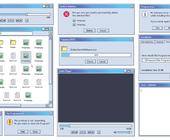Wie die Datenanalyse Ringier Afrika zum Durchbruch verhalf
The world is one big data opportunity
.io: How big is your team today?
Tim: Without the operational overhead, we have about 180 employees. Half of them are in Nigeria, about a third in Ghana, and the rest in Kenya.
.io: How do your teams communicate? Do you use any collaboration tools?
Tim: Predominantly, we use Slack and Trello to collaborate. Skype is widely used because we are a distributed team. Supermetrics for Google Drive, of course, and we still email, but more at the product organization level.
.io: Which tool does your editorial team use the most?
Tim: Our writers use mostly Slack. Creative and marketing teams do more work in Trello. And of course, Salesforce [is used by] the finance team.
Slack came up a lot in customer feedback, so we successfully integrated Slack into our platform. If you are curious about Slack, you can read more about it here.
.io: Would you say your team is data-driven?
Tim: We are definitely trying to be. At Ringier, we have a very large amount of historical data available to us, and we use it a lot to drive business decisions and strategies, especially for editorial and video. And we’ve introduced a number of data analytics tools to help the team understand the data better.
.io: Could you elaborate on that? What tools do you use for analyzing data?
Tim: It varies across the different business units. For editorial, we are mainly using .Io Media, and since we do distributed content, we look a lot at what Google Analytics has to offer, and we aggregate this data via Supermetrics.
.io: Is there a direct correlation between using analytics tools and productivity?
Tim: Yes, absolutely. We have seen it greatly improve our team’s productivity, and that’s one of the main reasons we use these tools. You have to possess a certain level of soft skills to learn how to use this feedback so you can be more productive and make better decisions.
.io: Does analytics create competition on the editorial team?
Leonie: Yes, of course. We reward our editors when their content ranks highly, and naturally, that creates competition. By looking at historical data, we are able to identify our top performers over time and see individual and team trends.
Tim: Without the operational overhead, we have about 180 employees. Half of them are in Nigeria, about a third in Ghana, and the rest in Kenya.
.io: How do your teams communicate? Do you use any collaboration tools?
Tim: Predominantly, we use Slack and Trello to collaborate. Skype is widely used because we are a distributed team. Supermetrics for Google Drive, of course, and we still email, but more at the product organization level.
.io: Which tool does your editorial team use the most?
Tim: Our writers use mostly Slack. Creative and marketing teams do more work in Trello. And of course, Salesforce [is used by] the finance team.
Slack came up a lot in customer feedback, so we successfully integrated Slack into our platform. If you are curious about Slack, you can read more about it here.
.io: Would you say your team is data-driven?
Tim: We are definitely trying to be. At Ringier, we have a very large amount of historical data available to us, and we use it a lot to drive business decisions and strategies, especially for editorial and video. And we’ve introduced a number of data analytics tools to help the team understand the data better.
.io: Could you elaborate on that? What tools do you use for analyzing data?
Tim: It varies across the different business units. For editorial, we are mainly using .Io Media, and since we do distributed content, we look a lot at what Google Analytics has to offer, and we aggregate this data via Supermetrics.
.io: Is there a direct correlation between using analytics tools and productivity?
Tim: Yes, absolutely. We have seen it greatly improve our team’s productivity, and that’s one of the main reasons we use these tools. You have to possess a certain level of soft skills to learn how to use this feedback so you can be more productive and make better decisions.
.io: Does analytics create competition on the editorial team?
Leonie: Yes, of course. We reward our editors when their content ranks highly, and naturally, that creates competition. By looking at historical data, we are able to identify our top performers over time and see individual and team trends.
Promote transparency to achieve success
.io: What percentage of the team actively uses data tools?
Tim: About 15-20% are actively using them in one way or another. Everyone is exposed to the data produced by these tools and dashboards, but only a few have direct access to them.
Leonie: We installed video monitors throughout the office, where we display our .Io dashboards for different businesses and regions. This allows everyone on the floor access to important statistics to see how our business is doing.
Tim: About 15-20% are actively using them in one way or another. Everyone is exposed to the data produced by these tools and dashboards, but only a few have direct access to them.
Leonie: We installed video monitors throughout the office, where we display our .Io dashboards for different businesses and regions. This allows everyone on the floor access to important statistics to see how our business is doing.
.io: What about your authors? Are they looking at their own statistics?
Leonie: Our authors receive a daily digest from .Io Media with detailed statistics [each digest contains information on page views, top articles and authors, readability and much more]. This data motivates them to be competitive and smart in their decisions, and help them keep their eyes on the goals and maintaining a high level of standard.










